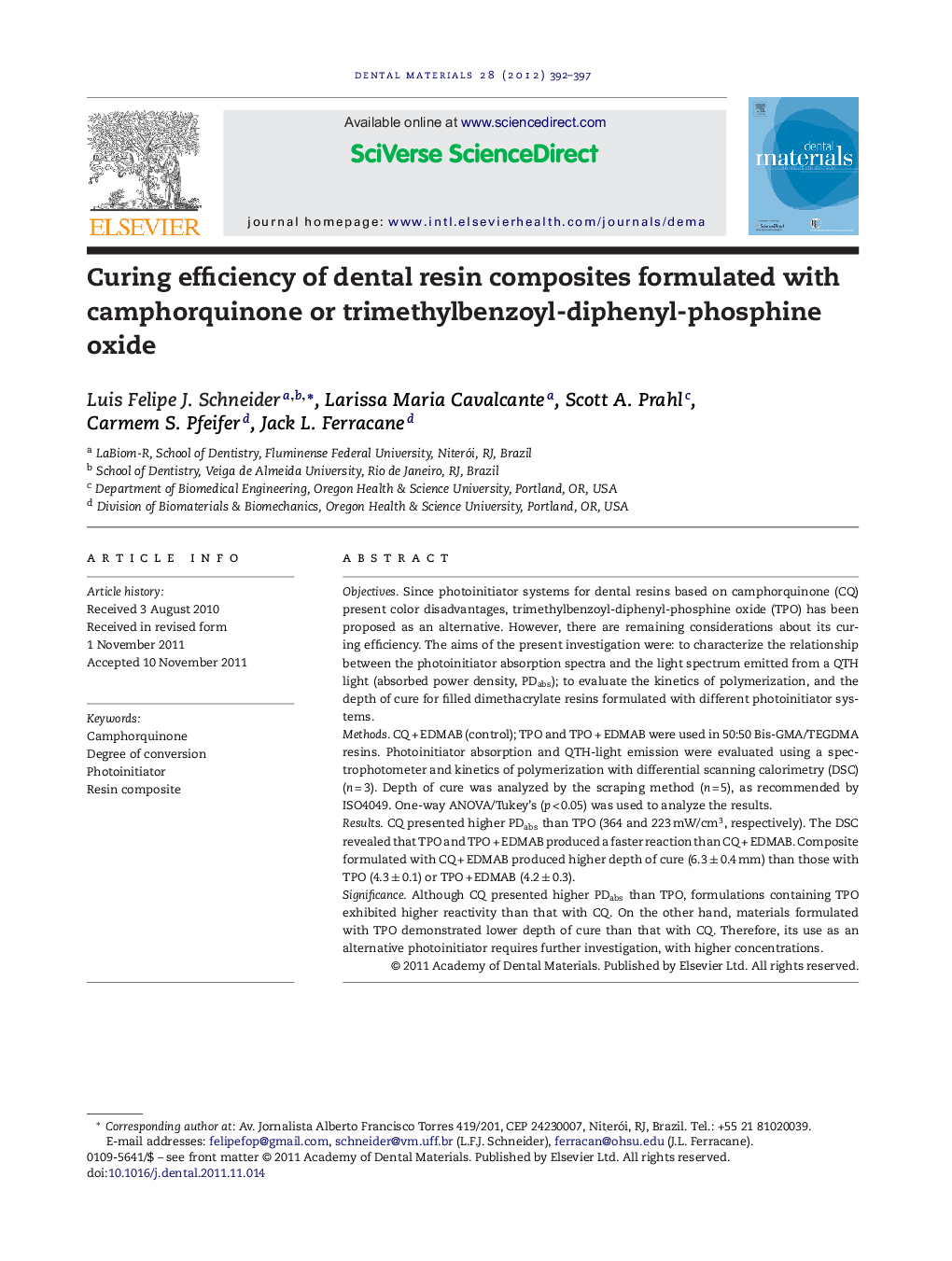| Article ID | Journal | Published Year | Pages | File Type |
|---|---|---|---|---|
| 1421133 | Dental Materials | 2012 | 6 Pages |
ObjectivesSince photoinitiator systems for dental resins based on camphorquinone (CQ) present color disadvantages, trimethylbenzoyl-diphenyl-phosphine oxide (TPO) has been proposed as an alternative. However, there are remaining considerations about its curing efficiency. The aims of the present investigation were: to characterize the relationship between the photoinitiator absorption spectra and the light spectrum emitted from a QTH light (absorbed power density, PDabs); to evaluate the kinetics of polymerization, and the depth of cure for filled dimethacrylate resins formulated with different photoinitiator systems.MethodsCQ + EDMAB (control); TPO and TPO + EDMAB were used in 50:50 Bis-GMA/TEGDMA resins. Photoinitiator absorption and QTH-light emission were evaluated using a spectrophotometer and kinetics of polymerization with differential scanning calorimetry (DSC) (n = 3). Depth of cure was analyzed by the scraping method (n = 5), as recommended by ISO4049. One-way ANOVA/Tukey's (p < 0.05) was used to analyze the results.ResultsCQ presented higher PDabs than TPO (364 and 223 mW/cm3, respectively). The DSC revealed that TPO and TPO + EDMAB produced a faster reaction than CQ + EDMAB. Composite formulated with CQ + EDMAB produced higher depth of cure (6.3 ± 0.4 mm) than those with TPO (4.3 ± 0.1) or TPO + EDMAB (4.2 ± 0.3).SignificanceAlthough CQ presented higher PDabs than TPO, formulations containing TPO exhibited higher reactivity than that with CQ. On the other hand, materials formulated with TPO demonstrated lower depth of cure than that with CQ. Therefore, its use as an alternative photoinitiator requires further investigation, with higher concentrations.
